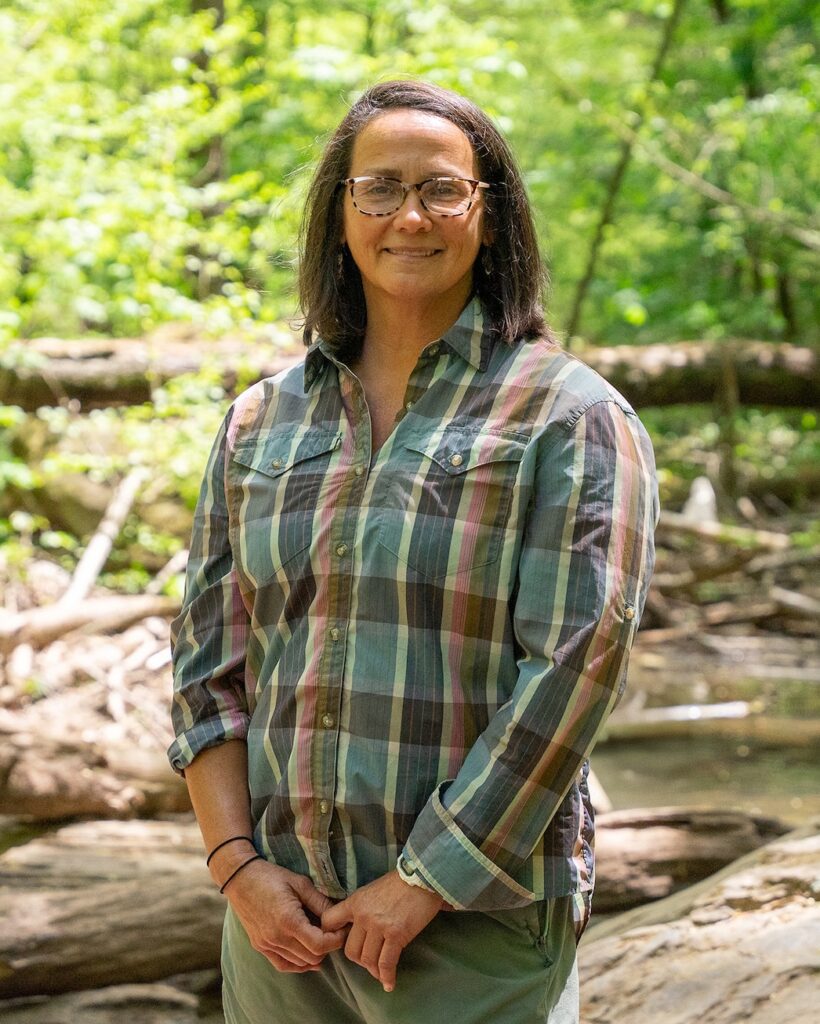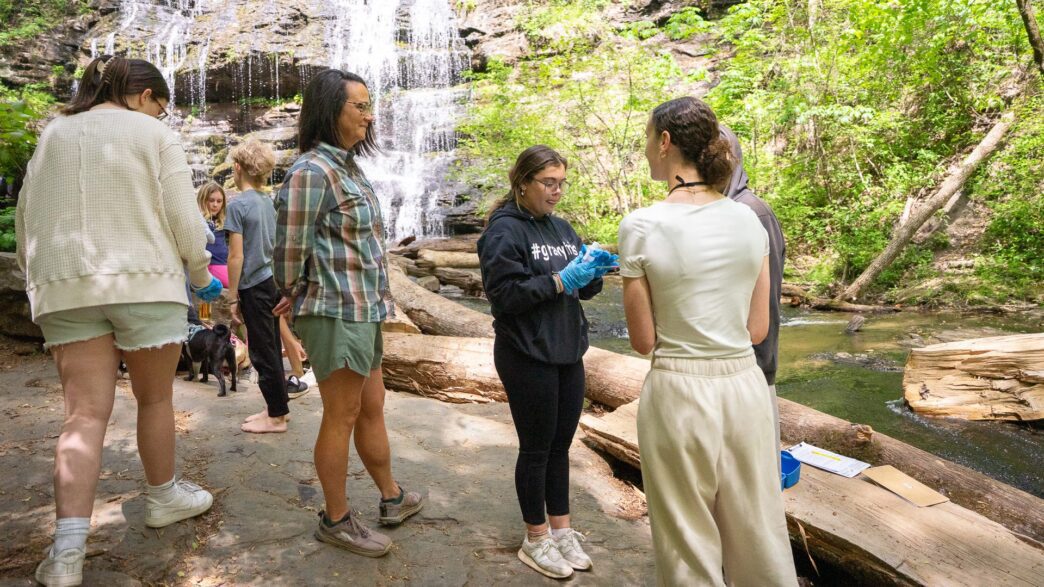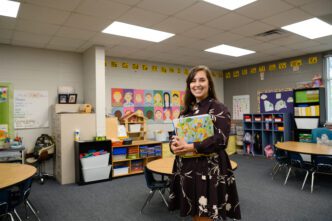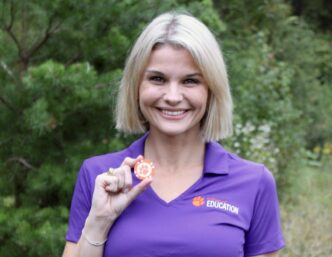At any given moment, Amanda Gladys would probably rather be outside. She spent the entire summer hiking the Appalachian National Scenic Trail. As a science teacher at Walhalla High School, she takes any opportunity to bring the classroom outside to her students, from planting native vegetation to prevent shoreline erosion to doing water quality tests at Station Cove Falls in Oconee.
As a doctoral student in the College of Education’s teaching and learning program, Gladys is equipping herself to apply, communicate and disseminate what she has learned through the program and years of teaching using the environment around her.
Much of that experience has been in partnership with Green Steps, a program designed to help South Carolina schools earn awards for establishing sustainability projects where students learn, actively engage in projects and teach others. Gladys’ doctoral studies have aided her efforts to participate in Green Steps and vice versa.

“Taking the classroom outside requires more planning and work, but this is a source of joy for me,” Gladys said. “It has been really fulfilling to see avenues open up for this method of teaching; I think students, their parents and those who fund this kind of work find it appealing because we’re all working toward something together: an education that goes beyond the classroom, connecting students to nature and real-world learning.”
To earn a Green Steps designation, a school must engage in six long-term projects each year, falling under the categories of conserve, protect or restore. The class includes experts in related areas who visit classes, and the “doing” aspect involves students engaging in hands-on learning. A required “teach” component involves students teaching their content to other classes via posters, videos or other visual aids.
Gladys designed an entire district-approved course around Green Steps criteria and activities, so students can enroll in the course to engage in activities such as the water quality testing at Station Cove Falls. The water quality test that Gladys led in April fit under Green Steps’ “protect” category.
Thanks to training from Gladys, all students in the class became Adopt-a-Stream Certified Volunteers, meaning they can enter sampling data obtained in the field into a citizen science online database that measures water quality. Students look for factors such as dissolved oxygen, pH levels and water transparency to determine quality.
Students don’t simply input the data they measure and interpret into a website; they must also report it to classmates and other students at Walhalla High School.
“The teach component really requires students to take responsibility for their own learning,” Gladys said. “Any time students have to teach what they’ve learned to another student or a parent or an administrator, that truly transforms their understanding.”
Gladys said the teaching and learning Ph.D. program has exposed her to more peer-reviewed research in outdoor learning and faculty who specialize in this area of teaching and research. She has become more aware of the benefits of her preferred way of teaching, which should only help her win over other educators and administrators in the future.
The program has also helped her network with like-minded teachers, and a fellow graduate student has even invited her to lead an outdoor-based lesson with a pre-service class.
Faculty in the doctoral program are thrilled that Gladys brings her experience as a place-based educator to the program and other students. Julianne Wenner, associate professor in the College of Education and an instructor in the teaching and learning program, said Gladys’ perspective provides potential “ah-ha” moments for educators who may not have done as much place-based education.
Wenner also knows that Gladys, who could claim to be more of an expert in outdoor education than most, is in the Ph.D. program to pursue new ideas, dig into research and learn from others.

“Amanda makes sure that her students connect with the outdoors and not just learn outdoors,” Wenner said. “She gets to know their strengths and builds on those; I know she pushes her students as much as she pushes herself, but she has found a really effective way to build relationships with them.”
This fall, Gladys is teaching biology. Even if she planned to keep learning indoors, her students may get the final word; they already ask her when they will be outside.
“We don’t have that built in, but I’m sure we’ll end up outside,” Gladys said with a laugh. “I’m just not good at being so formal.”
Gladys knows that she thrives teaching in a casual, outdoor learning environment, and she’s seen how students benefit in intangible ways. As Wenner said, she builds something with her students that an educator can’t easily accomplish in a “traditional” school setting.
Time and again, Gladys sees the quiet, withdrawn student in class become more social and outgoing on a hiking trail. The hesitant student becomes the one who leaps into action and initiates an activity. She is proud of the students who volunteered to return to school––after the school year was over––to continue maintaining a garden they had planted months before.
“Teaching is about relationships as much as it is about concepts,” Gladys said. “Getting a real snapshot of who a student is as a person and learner makes establishing that relationship easier, and sometimes it’s the only way to create that relationship. So, I don’t want to be outside as a teacher; I feel like I need to be.”









